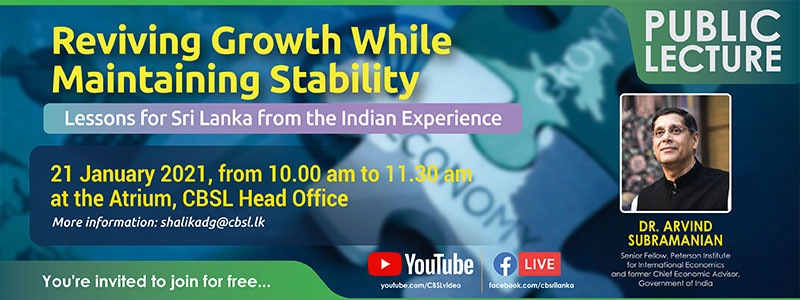The Monetary Law Act Order No. 02 of 2019 on “Enhancing Efficiency of the Transmission of Recent Policy Decisions to Rupee Denominated Market Lending Rates” required, inter alia, every licensed commercial bank (LCB) to reduce their weekly Average Weighted Prime Lending Rate (AWPR) by at least 250 basis points by 27 December 2019, compared to their AWPR published by the Central Bank of Sri Lanka as at 26 April 2019 in the Weekly Economic Indicators publication. This shall not apply to LCBs, whose AWPR reaches or falls below 9.50 per cent per annum as at the date of this Order or anytime thereafter.

















 Newly appointed Governor of the Central Bank of Sri Lanka Deshamanya Professor W D Lakshman assumed duties in his new post on Tuesday, the 24th of December 2019 at the Governor’s office in Colombo. His appointment was made by His Excellency the President of the Democratic Socialist Republic of Sri Lanka Gotabaya Rajapaksa, according to the provisions of the Monetary Law Act No.58 of 1949. Accordingly, Professor Lakshman will function as the Chairman of the Monetary Board of the Central Bank of Sri Lanka.
Newly appointed Governor of the Central Bank of Sri Lanka Deshamanya Professor W D Lakshman assumed duties in his new post on Tuesday, the 24th of December 2019 at the Governor’s office in Colombo. His appointment was made by His Excellency the President of the Democratic Socialist Republic of Sri Lanka Gotabaya Rajapaksa, according to the provisions of the Monetary Law Act No.58 of 1949. Accordingly, Professor Lakshman will function as the Chairman of the Monetary Board of the Central Bank of Sri Lanka.